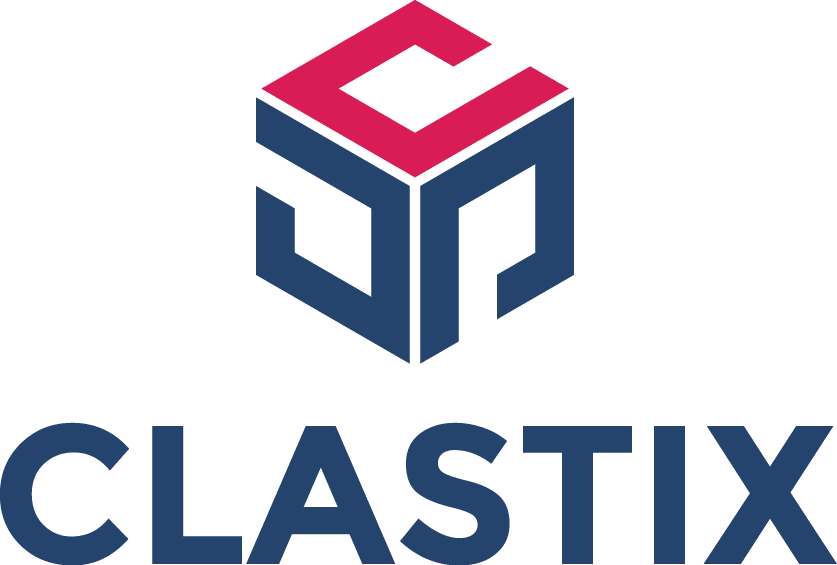2ND open call winners
On October 4, 2024, FLUIDOS successfully concluded its 2nd Open Call, receiving a total of 47 applications from applicants spanning over 14 countries. After a careful selection process, 5 projects were chosen to receive the Use Case grant.
Explore how the winners will test and validate FLUIDOS architecture and software by incorporating their own additional software on top of the FLUIDOS system and explore new sectors beyond the traditional application domains:
These are the winners of the 2nd Open Call:

Use Case Grant
Name of the Subproject
FLARE
Federated Liquid Resources Exchange
Description
FLARE (Federated Liquid Resources Exchange) is a platform that pools computing resources to boost AI and HPC efficiency and scalability. Using FLUIDOS’s decentralized orchestration, it dynamically allocates GPUs and accelerators like NPUs and FPGAs from various cloud providers, optimizing performance, cost, latency, and energy efficiency. It enables real-time negotiation and resource exchange within federated Kubernetes clusters, allowing providers to share idle GPUs while maintaining control and enhancing utilization.
Subproject goals and how will FLUIDOS help you achieve them
The KPIs for the projects are:
- Cost Reduction: Targeting a 20-30% reduction in operational costs by enabling dynamic GPU sharing and real-time negotiation compared to static allocation models.
- GPU Utilisation: Increase GPU usage to 95% of their lifecycle through dynamic allocation, compared to the typical 70% utilisation observed in traditional systems.
- Scalability: Demonstrate the ability to federate GPU resources across multiple cloud providers, presenting them as a seamless resource pool without discontinuity points.
The proposed solution leverages FLUIDOS’s distributed architecture, to enable resource sharing across multiple cloud providers. Using intent-based orchestration and real-time negotiation, it will ensure efficient allocation of GPUs based on workload requirements, optimising for cost, latency, and performance without any manual intervention.

Use Case Grant
Name of the Subproject
FLUIOT
Description
FLUIOT aims to demonstrate the advantages of FLUIDOS for optimizing large-scale edge computing deployments. Specifically, FLUIDOS’s capabilities should help enhance the efficiency, sustainability, and cost-effectiveness of Correlation Systems Smart City infrastructures. To demonstrate these benefits, we will integrate FLUIDOS into our existing system, deploy it on various edge and cloud IoT devices in our Thai deployments, collect and analyze data, implement predictive maintenance strategies, and evaluate cost savings. Through these activities, we expect to achieve significant reductions in cloud costs, enhanced data privacy, improved system performance, and a more sustainable infrastructure.
Subproject goals and how will FLUIDOS help you achieve them
FLUIOT aims to optimize Correlation Systems’ microservice-based applications by leveraging FLUIDOS and its components, with a focus on cost reduction, improved resilience, and predictive maintenance. Key Objectives: Minimize cloud server usage by increasing server density and prioritizing edge devices. Offload processing tasks to edge devices to reduce cloud load and improve resource efficiency. Implement mechanisms to ensure service availability, including microservice rerouting and fault tolerance. Optimize resource allocation via FLUIDOS’ cost-aware orchestrator to favor energy-efficient devices and reduce carbon footprint and operational costs. Leverage FLUIDOS’ decentralised architecture for decentralized temperature analysis, to identify and address potential device failures proactively. Overall, FLUIDOS’s intent-driven orchestration will help streamline the process of deploying, managing and maintaining cloud and edge resources, reducing manual effort and costs.

Use Case Grant
Name of the Subproject
FluidHPC
Description
The proposed project, FluidHPC, aims to extend our existing HPC optimisation platform by leveraging the FluidOS environment to enable seamless distribution of HPC workloads across multiple cloud providers and edge resources. By integrating FluidOS, we can abstract the underlying infrastructure complexities and provide a unified platform that dynamically selects the most appropriate computing resources—whether in the cloud or at the edge—based on performance metrics and cost efficiency. This integration will not only enhance computational speed and reduce costs but also enable low-latency visualisation of results through edge resources.
Subproject goals and how will FLUIDOS help you achieve them
- EO#1.1: Develop and implement methods to optimize the execution of DL models on resource-constrained drones.
- Incorporate Edge Computing Resources: Extend computational capabilities to edge resources for tasks requiring minimal latency, such as real-time data visualisation.
- Optimise Performance and Cost: Develop advanced prediction algorithms to select optimal resource allocations, balancing performance and cost across diverse infrastructure nodes.
- Demonstrate Data Sharing and Synchronization: Ensure seamless data transfer and synchronisation between clusters to support distributed HPC workloads and edge-based visualisation tools.

Use Case Grant
Name of the Subproject
ICEWAPP
Integrated Cloud-Edge System for Energy and Weather AI-based Power Prediction.
Description
ICEWAPP will develop a service for short-term prediction (nowcasting) of the energy generation in photovoltaic plants using the FLUIDOS architecture. The proposed service will introduce two key innovations: the combination of sensor data, meteorological simulations, and AI techniques to improve nowcasting accuracy; and the creation of a service that can be easily replicated in any PV power plant.
ICEWAPP will be developed by NABLADOT, S.L. with extensive experience in modeling environmental flows, ELECTROINGENIERÍA INDUSTRIAL XCLC, S.L. specialized in Industry 4.0 solutions and INGENIERIA Y APLICACIONES SOLARES ZARAGOZA 2005 S.L., specialized in the design, installation, operation and maintenance of photovoltaic installations.
Subproject goals and how will FLUIDOS help you achieve them
The primary subproject goals are as follows:
- Demonstrate the proper functioning of the proposed nowcasting service within the FLUIDOS infrastructure. The workflow, whether executed on the Edge or in the Cloud, must be capable of providing real-time predictions of photovoltaic generation.
- Improve accuracy in the predictions. The goal is to attain accuracy in typical error estimation indicators (MAE, MBE, rMBE, RMSE, rRMSE), at least, slightly better to those found in scientific literature.
The FLUIDOS architecture provides several distinct advantages over current state-of-the-art solutions, particularly in terms of latency reduction, prediction accuracy, scalability, and cybersecurity, which are essential to achieve the subproject goals:
- Faster Prediction Time
FLUIDOS enables significant reductions in prediction time by leveraging edge-based processing for real-time data analysis. Traditional cloud-only systems suffer from latency caused by network delays and the need to transfer large volumes of data for processing. FLUIDOS, with its hybrid edge-cloud architecture, allows critical low-latency tasks (such as cloud cover and weather analysis) to be processed locally at the edge, while more computationally intensive processes (e.g., AI model training and WRF simulations) are offloaded to the cloud. This optimizes resource usage and dramatically improves prediction speed. - Improved Prediction Accuracy
The integration of real-time data and AI models in FLUIDOS ensures more accurate energy production forecasting. Traditional batch-processing approaches lack the ability to continuously refine predictions as new data becomes available, leading to inaccuracies. FLUIDOS solves this by dynamically integrating real-time data from multiple sources (e.g., cameras, sensors, and SCADA) and processing it in real-time, allowing for continuous model updates and more accurate forecasts. - Scalability and Automation
Current technologies often require manual configuration and are difficult to scale across multiple sites. FLUIDOS addresses this by automating the integration of data from external sources (such as weather APIs and SCADA systems) and dynamically managing resource allocation between edge and cloud environments. This allows the system to scale effortlessly across multiple photovoltaic plants without requiring extensive manual intervention. - Enhanced Cybersecurity
FLUIDOS includes advanced cybersecurity features, ensuring that all data transferred between edge devices and cloud environments is encrypted and secure. This is especially important for critical infrastructure like photovoltaic plants, where sensitive SCADA data must be protected from potential cyberattacks. - Cost Efficiency
By dynamically managing the distribution of computational tasks between edge and cloud resources, FLUIDOS reduces operational costs. Processing real-time data at the edge minimizes the amount of data that needs to be sent to the cloud, reducing bandwidth usage and cloud storage costs. Additionally, FLUIDOS automates many tasks that would otherwise require manual oversight, further reducing labor costs.

Use Case Grant
Name of the Subproject
EVI
Enhancing the Vehicle-to-Edge Integration
Description
The proposed use case aims to manage computational tasks within saturated embedded High-Performance Compute (HPC) environments with a new approach: distributing the load of non-critical tasks across the vehicle and the surrounding edge infrastructure. Our research objective is the design of a solution to seamlessly migrate tasks across the vehicle and the edge, enabling their flexible allocation.
Subproject goals and how will FLUIDOS help you achieve them
The main outcome is the design and benchmark of a reference prototype platform that leverages FLUIDOS to adaptively migrate tasks among HPCs and Edge with the objective of improving the amount of functionality and the user experience in the vehicle.
